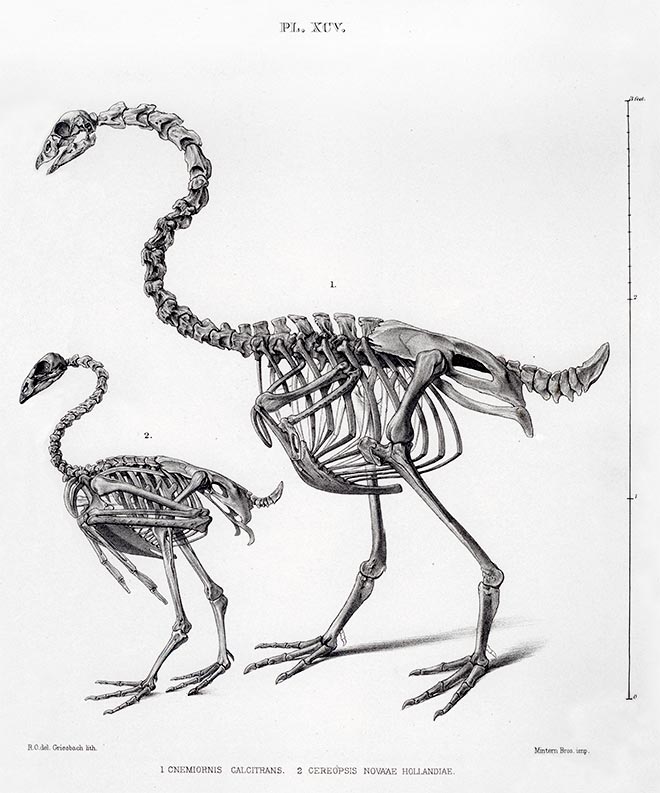
New Zealand had two species of huge flightless geese. The skeleton at right, drawn by fossil specialist Richard Owen in 1879, is of the South Island goose, thought to have weighed up to 18 kilograms. The smaller skeleton is that of the New Zealand species’ nearest relative, Australia’s 5-kilogram Cape Barren goose. The scale indicates 3 feet or about 1 metre. The South Island goose was probably more a land bird than a water bird. Being large and flightless made it easy game for Māori hunters, leading to its extinction in the last few hundred years.
Te whakamahi i tēnei tūemi
Te Ara – The Encyclopedia of New Zealand
Reference:
Richard Owen, Memoirs on the extinct wingless birds of New Zealand. London: John Van Voorst, 1879, plate 95
This item has been provided for private study purposes (such as school projects, family and local history research) and any published reproduction (print or electronic) may infringe copyright law. It is the responsibility of the user of any material to obtain clearance from the copyright holder.







Tāpiritia te tākupu hou